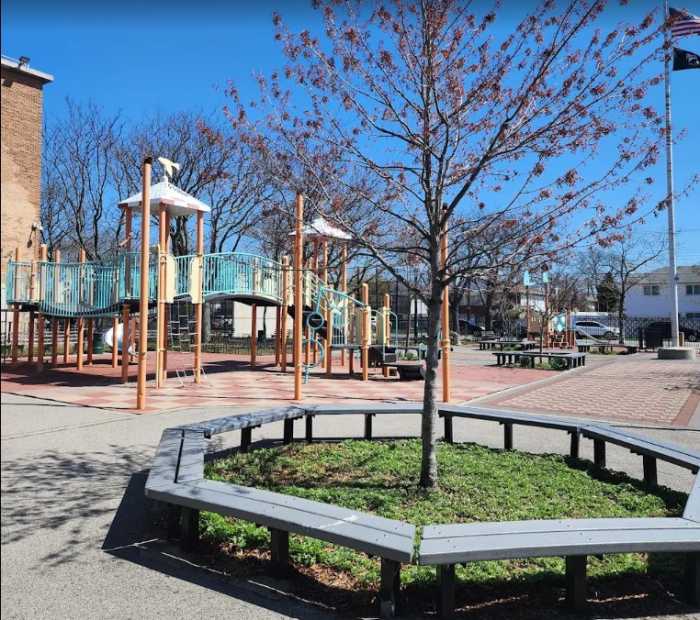By Harvey D. Goodman
Now is the time of year to order your spring bulbs. And to make things easy, most mail order distributors and nurseries in the area will provide you with a variety of ready-made spring planting plans to fit just about any budget or garden size.
Millions of bulbs are planted each year by professional and amateur gardeners hoping to be rewarded with a spectacular array of flowers in the spring. Unfortunately, a lack of understanding about the basics of bulbs and planting techniques can result in wasted effort and poor results.
Let’s start with some of the fundamentals so that we can better appreciate these storage tanks of beautiful spring flowers.
Bulbs are essentially a short underground stem with thick, fleshy leaves that contain stored food. Onions, Tulips, Daffodils and Lilies are but a few of the more common types of bulb-producing plants. Bulbs help the plant survive dormant periods, that is, times during the year when it is too hot, cold, or dry. During the growing season, the fleshy leaves supply the growing shoot with food until it produces leaves for photosynthesis.
Bulbs are sold in their dormant stage. When they are available, usually by early fall, they should be planted as soon as possible in order to ensure survival during the winter and proper growth and development during the spring.
A bulb-planting tool will allow you to plant individual bulbs by producing soil plugs in which to place the bulbs. Planting bulbs in large masses is best accomplished by digging a trench or bed and bunching the bulbs in order to create vivid, contrasting colors and combinations.
The nursery will generally recommend the depth in which the bulbs should be planted. For instance, Hyacinths are best planted to a depth of 6-8 inches, Tulips to 4-6 inches, Gladioli, Daffodils, and Dahlias to 3-4 inches. I usually place some phosphate at the bottom of the trench or hole prior to planting the bulb. Phosphorous encourages root development — a much needed quality that ensures the survival of the bulb before the very cold weather sets in.
Plant bulbs with their tips facing up, otherwise the bulb will expend too much energy righting itself, and result in poor flowering. Bunching bulbs together will make the most effective display. In order to accomplish this, the bulbs should be planted close to each other but should not be touching.
Carefully replace the soil without disturbing the position of the bulbs. Add a layer of mulch to retain warmth and moisture. Water daily until the frigid weather sets in — you want to keep the bulbs moist, so that they continue to produce roots. Remember the operative word is moist not drenched.
A suggested planting plan may include : Blue Crocuses, which will represent the first sign of spring but often bloom before winter ends, followed by Yellow Daffodils. Color accents provided by Hyacinths and Muscari are capped with a lush display of Tulips. The Crocuses will generally bloom in March, the Daffodils in April, the Hyacinths in late April early May and, finally, the Tulips that will take you through May to early June
Fall Planting Pointers
Fall’s moderate temperature, and often abundant rainfall, make for excellent planting conditions for shrubs, perennials and trees. In some instances, the plant may have been grown in a container . Container grown plants may have been confined in their pot for several seasons and thus often become root-bound. To disrupt the girdling root pattern that develops in receptacle grown plants, follow these recommendations.
Remove small plants from the pot. Using a sharp kitchen knife, make four to six vertical cuts on the sides of the root ball, and an X on the bottom. The cuts will stimulate root growth into the soil.
If, however, you are planting large foliage , one that is perhaps 12-16 inches across, you will have to conduct a somewhat more drastic procedure — a technique known as butterflying. In this procedure, a slice is made up through the center of the ball. Stop about three inches from the top. Then spread the two sections of the roots in the soil. This somewhat Draconian procedure will encourage root development into the soil that is nearer the surface where more oxygen is available. This is particularly important when planting is conducted in heavy soil that has poor drainage .
In either case, keep the soil around the plants evenly moist until the ground freezes.
Questions or comments on gardening and plant care should be addressed to : The Plant Doctor, c/o Queens Publishing Corp., 41-02 Bell Blvd., Bayside, NY 11361 or e-mail Harvey.Goodman@att.net.




































